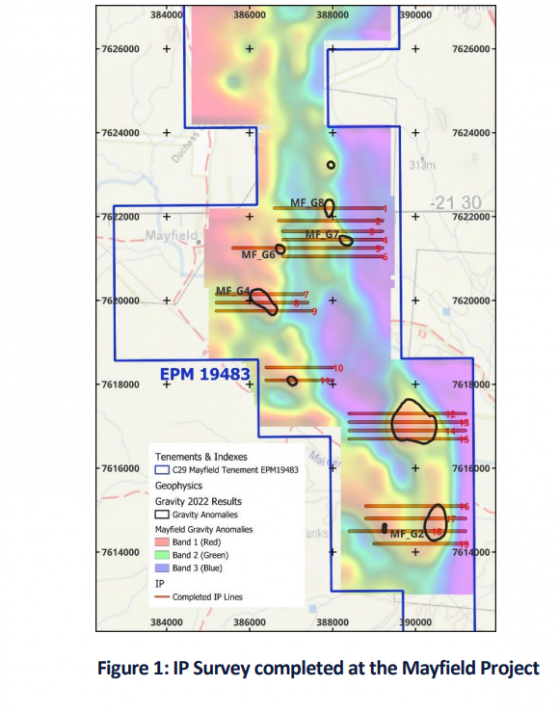C29 Metals Ltd (ASX:C29) has produced key findings from an Induced Polarisation (IP) geophysical survey conducted at its Mayfield Base Metals Project in northwest Queensland.
The survey revealed multiple open targets, including chargeable and resistive anomalies that coincide with previously identified gravity and magnetic targets.
These findings have provided valuable insights into what the company calls an extensive mineralised system present at the exploration project.
Refining targets
Plans are now afoot to conduct additional IP survey lines to refine potential targets.
The IP survey, covering 46.7 line kilometres, was carried out by Australian Geophysical Services, a highly experienced firm that recently completed a survey for C29 at its Sampsons Tank Project in New South Wales.
This survey involved collecting data along five sets of section lines to cover the targets identified through the interpretation of the 2022 gravity survey, soil geochemistry and magnetic survey analysis.
The results of the survey showcased chargeability and resistivity anomalies in each of the five sets of IP lines. Notably, anomalies at MF_G4 and MF_G6 are open to the north and south, respectively, while the anomaly at MF_G8 is open to the north.
Potential mineralisation
These findings indicate the presence of potential mineralisation within the project area.
In other news, C29 has decided not to pursue the acquisition of Pocitos 7 and Pocitos 9 in Salta, Argentina. Following completion of due diligence on the drill results and the prospectivity of the tenures, the company determined that the minimum lithium grade and porosity of the aquifer zone encountered at Pocitos 7 were not conducive to its interests.
C29 continues to apply systematic and modern exploration techniques to its existing copper exploration tenures.
Other work
Alongside the survey at the Mayfield project, the company is at work on the Sampsons Tank Project in NSW, where airborne geophysics and an IP survey have been completed to assist in the design of a future drilling program.
In addition, the company’s Stadlers project in Western Australia, in the Ashburton Basin, has shown promise for structurally-controlled epithermal copper deposits.
Historical rock chips and shallow drilling results indicate the presence of significant copper and gold mineralization. The company has conducted a comprehensive geochemical program and continues to interpret reprocessed aeromagnetic data for the project.
Finally, C29 also announced a board change, with Tianjiao Yang resigning from his position as a non-executive director. The board expressed its appreciation for Yang's contributions and wished him well in his future endeavours.
Read more on Proactive Investors AU
